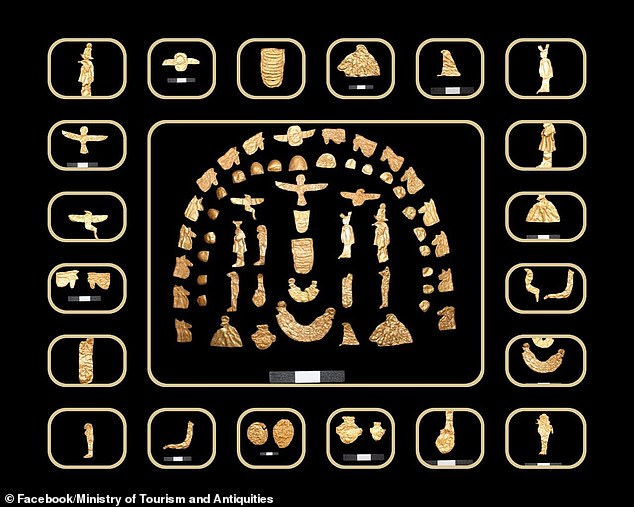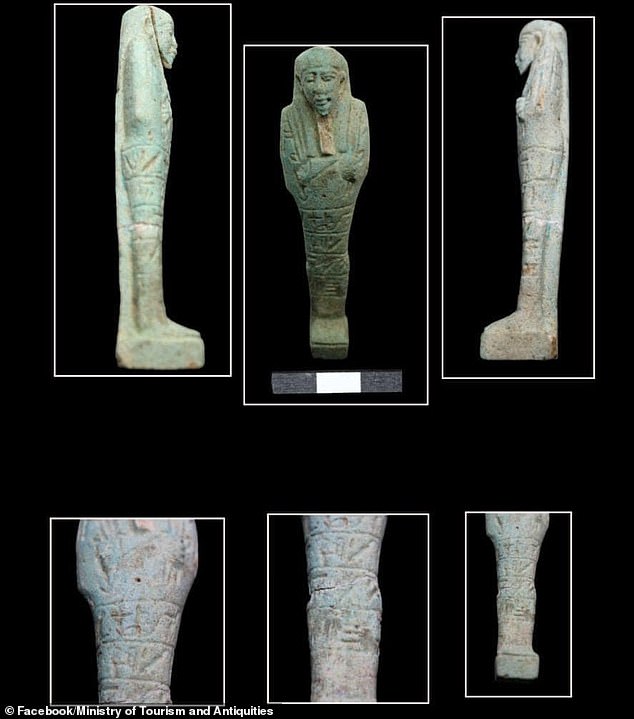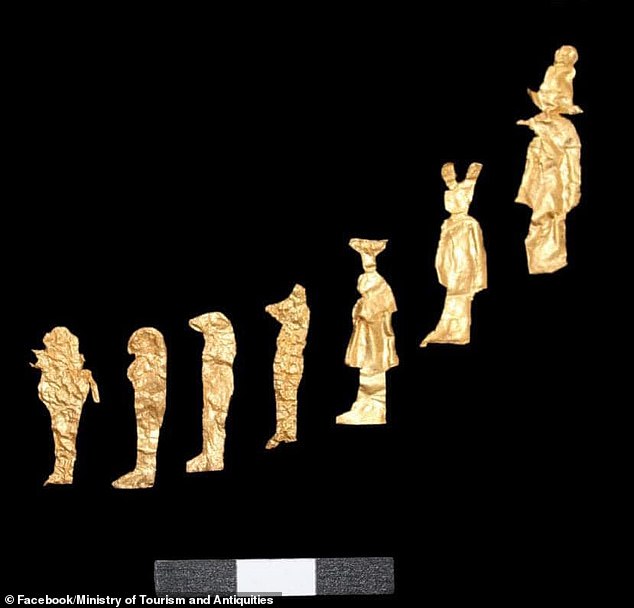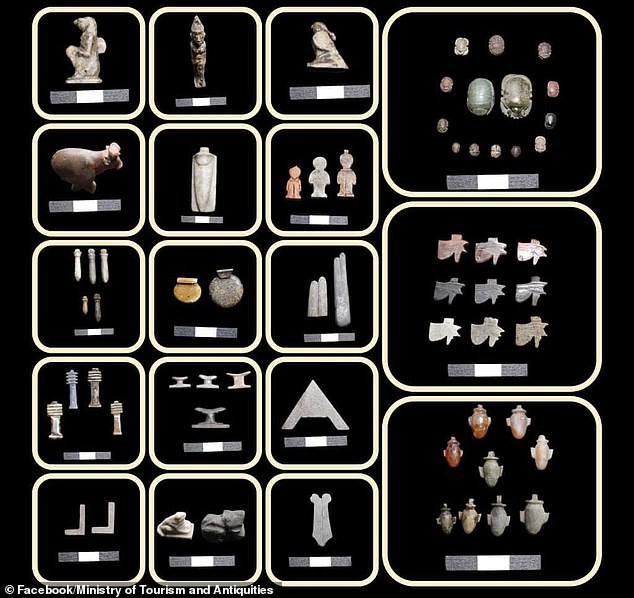Treasure trove of gold artifacts discovered among 60 newly discovered tombs in Egypt
A treasure trove of historical gold leaf objects has been discovered in Egypt, buried for almost 3,000 years.
Archaeologists discovered 63 tombs at Tel-El-Dir, a burial complex in the city of Damietta, which were filled with figurines, pottery, coins and a mirror.
The team believes the relics could reveal the secrets of the ancient Egyptians dating back to the Bronze Age, particularly about the city’s foreign trade efforts.
A total of 38 coins dating from the Ptolemaic period (304 to 30 BC) were found at the site. when a descendant of Alexander the Great’s general ruled Egypt.
The ancient currency featured images of both ancient Greek and Egyptian gods.
Archaeologists have discovered the cemetery of Tel-El-Dir in the city of Damietta in Egypt, which contains more than 60 tombs

Gold foil artifacts were discovered that led researchers to believe they could shed light on how Egyptians lived during the Bronze Age and Ptolemaic periods
The artifacts and tombs are believed to date from the Late Period of Egypt, from 664 BC to 332 BC, when Damietta was the center of foreign trade with cities in the Mediterranean.
The pottery was probably exchanged with other cities, but it was the bronze coins found in an earthenware pot that are indicative of the unrest that affected the city of Damietta.
The coins appear to be engraved with the heads of the Greek god Zeus and the Egyptian god Ammon.
These gods are associated with oracles and prophecies, which date the coins to the late third century, said Thomas Faucher, director of the Center for Alexandrian Studies in Egypt, who was not involved in this research. Living science.

The artifacts are believed to date from the Late Period of Egypt, from 664 BC to 332 BC, when Damietta was the center of foreign trade with cities in the Mediterranean.

These gods are associated with oracles and prophecies, which dates the coins to the late third century. The researchers found gold foil images with religious symbols and ancient Egyptian idols, including the Eye of Horus, which revealed that the deceased were people of high social status
When the coins were issued in 206 BC, the country was in the midst of a large-scale rebellion led by two native Egyptians, the pharaohs Horwennefer and Ankhwennefer, who wanted to overthrow Greek rule.
The ancient Greeks ruled the country and introduced a new language, religion and way of life, creating a divide between the two populations.
After the uprising, all coins were recalled en masse and given additional markings.
However, the 38 bronze coins that archaeologists found had been hidden by someone unwilling to meet the demands of the new rulers.
Faucher told Live Science that the new discovery could provide more details about the events that occurred and better explain why the ancient Egyptians hid these objects.
However, researchers have not yet officially confirmed whether the coins were buried during the uprising.

The findings from the 26th Dynasty ‘confirm the completion of the historical sequence of the Tel El-Dir cowardice and the important commercial role of the Damietta site across different historical periods’
The tombs were built of mud bricks above the storage places for the grave goods. However, one ‘huge’ tomb contained the remains of several people who may have belonged to a higher social class.
The tomb also contained a treasure trove of gold foil artifacts, such as religious statues and ancient Egyptian idols, including the Eye of Horus – a falcon-headed god worn as an amulet and believed to have protective powers
They discovered funeral pyres, wooden structures used to cremate bodies, and gold foil figurines that were notable because they appeared to depict ‘ba birds’.
These were mythological creatures with wings, a human head and human arms. They were believed to watch over the spirit of the deceased as it passed on to the afterlife.
The researchers did not disclose whether human remains were found at the Damietta site or what condition they were in. However, they said that the artifacts found in the graves “highlight the historical significance of this discovery, which may mark the beginning of a renewed dating of an important period for the city of Damietta.”
They also explained that the findings from the 26th Dynasty “confirm the completion of the historical sequence of the Tel El-Dir cowardice and the important commercial role of the Damietta site across different historical eras.”
